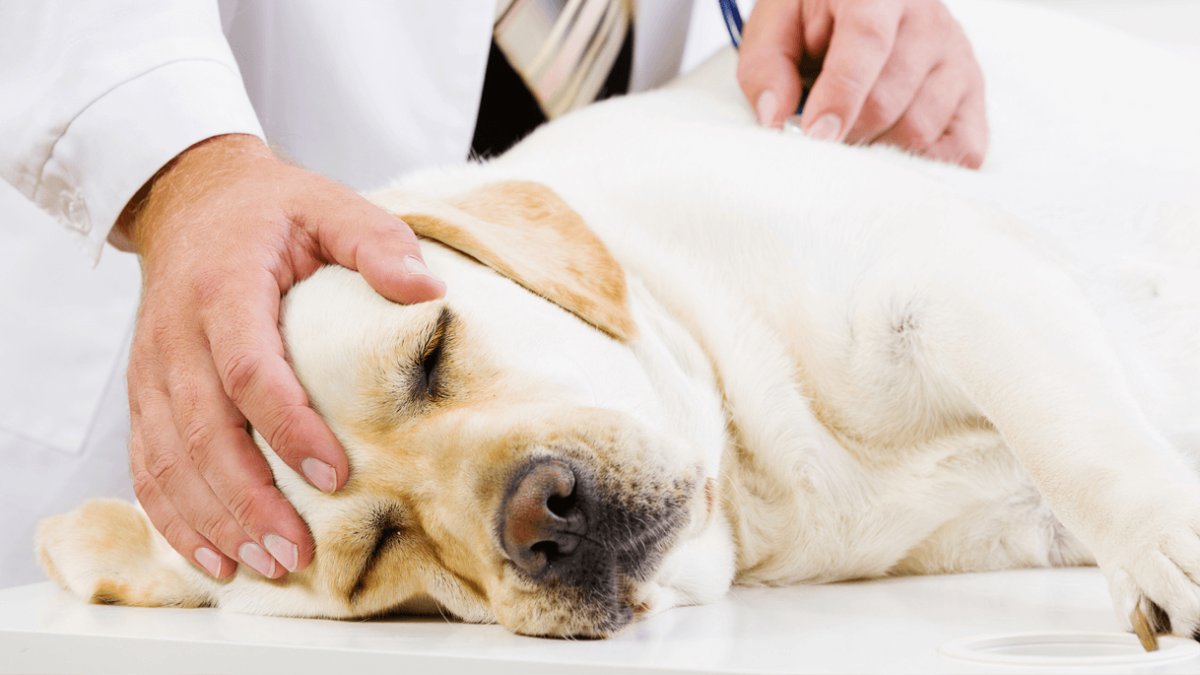Folliculitis in Dogs - Treatment & Causes
23.10.2021.
Dogs have sensitive skin, and keeping it in peachy condition can be tricky. One of the common issues dog owners face is folliculitis in dogs. If you think this is something your dog is experiencing, you can read all about it here. We will give you the most important information about folliculitis in dogs, as well as the most common causes and treatment options. Here’s what you should know about it.
What is folliculitis in dogs?
To understand folliculitis, we need to understand what a follicle is. It is a tiny opening on the dog’s skin, and through that opening, their hair grows. When one or more of these tiny openings get infected, the area around it will become red and swollen. This is primarily because of bacteria that managed to get through the skin’s natural defenses. That is what is known as folliculitis.

Common causes
When hair follicles get damaged, the area might get infected. The most common cause of folliculitis in dogs is the Staphylococcus bacteria, but it is not the only cause. This type of bacteria is pretty common, and a healthy dog’s immune system will not allow it to pass through the skin. However, if the bacteria manage to do that, it will most likely cause a reaction. Here are other potential causes of your dog’s folliculitis;
- Local trauma
- Internal parasites (tapeworm, hookworm, etc.)
- External parasites (fleas, ticks)
- Yeast infections
- Viral infections
- Hypothyroidism
- Immune system disorders
- Allergies
- Cushing’s disease
When you visit your vet, they will have different questions for you. Things like dietary indiscretions, parasite infection history, medical history, and allergies. These things will help your vet accurately diagnose the reason for your dog’s folliculitis.
Folliculitis symptoms
Most of us want what’s best for our dogs, and sometimes, that means we have to learn about potential diseases and health issues our dogs might experience. If you noticed something weird on your dog’s skin, naturally, you want to know what it is. Folliculitis has some unique symptoms that will help you and your vet uncover your dog’s health issues. The most common symptoms of folliculitis in dogs are;
- Swelling
- Redness
- Pustules (area filled with pus)
- Papules (small red raised area that looks like acne)
- Excessive itching
- Epidermal collarettes
- Alopecia (hair loss in the affected area)
- Pain
- Hyperpigmentation (dark spots on the skin)

Knowing the most common folliculitis symptoms in dogs might help you detect and tackle the issue early. The sooner you start dealing with a health issue, the faster the recovery.
Did you know dogs can get acne? You can read more about it here - How to treat dog acne?
How is it diagnosed?
The thing that sets fantastic vets apart from regular vets is their diagnostic skill. Having a great diagnostician in your corner is one of the best things for you and your dog. Luckily, veterinary medicine is pretty advanced, so different diagnostic techniques and tests exist to help vets determine the exact cause of folliculitis in your dog.
The correct diagnosis will determine the best treatment, so your vet must perform as many tests as they need to make sure of the cause. Here are a few ways vets can determine the cause and diagnose folliculitis in dogs;
- Cytology test - The vet will look at skin cells under the microscope and determine the cause.
- Skin scrapes - The vet will scrape the skin off the affected area and examine it. This is the best way to determine if mites are culprits.
- Culture tests - Culture tests will determine the exact kind of bacteria or fungus that might have infected the dog.
- Biopsy - The vet will surgically remove a part of the infected skin and send it to the lab for analysis. This usually happens when the exact reason is difficult to uncover.
- Blood tests - Blood tests can tell your vet a lot about your dog’s body and organs. It will tell the vet the blood cell count, and whether there might be an underlying issue they need to take care of first.
Folliculitis treatment
Folliculitis can be caused by different things, as you can clearly see. Your vet will use the information they got from the tests, and based on that, they will determine the best possible treatment approach. For example, mite infestation is treated differently from bacterial infections. You should rely on your vet to let you know the best way to treat your dog’s folliculitis.
In most cases, the treatment will involve several things - regular baths, ointments, creams, shampoos, and antibiotics. There are special ointments, creams, and even sprays that contain steroids, which might be the best folliculitis treatment for some cases. If a bacteria infects your dog, the only way to treat that is with antibiotics. They can be topical or oral, but the basic principle is the same.

If your dog develops folliculitis because they have parasites, the best way to resolve folliculitis is by eradicating parasites. In that case, the best treatment is parasite medication. However, if your dog has a systemic disease, the best way to regain skin health is by dealing with the systemic disease.
Is folliculitis preventable?
In some cases, folliculitis is preventable. If your dog is treated for parasites, chances are they will not develop this health problem because of them. However, it can still happen for a number of other reasons. Unfortunately, that means folliculitis is not entirely preventable. We can only prevent other diseases that can have folliculitis as one of their symptoms. The best way to deal with this health problem is by noticing it early and letting our vets know our dog needs attention.
World Dog Finder team







Share